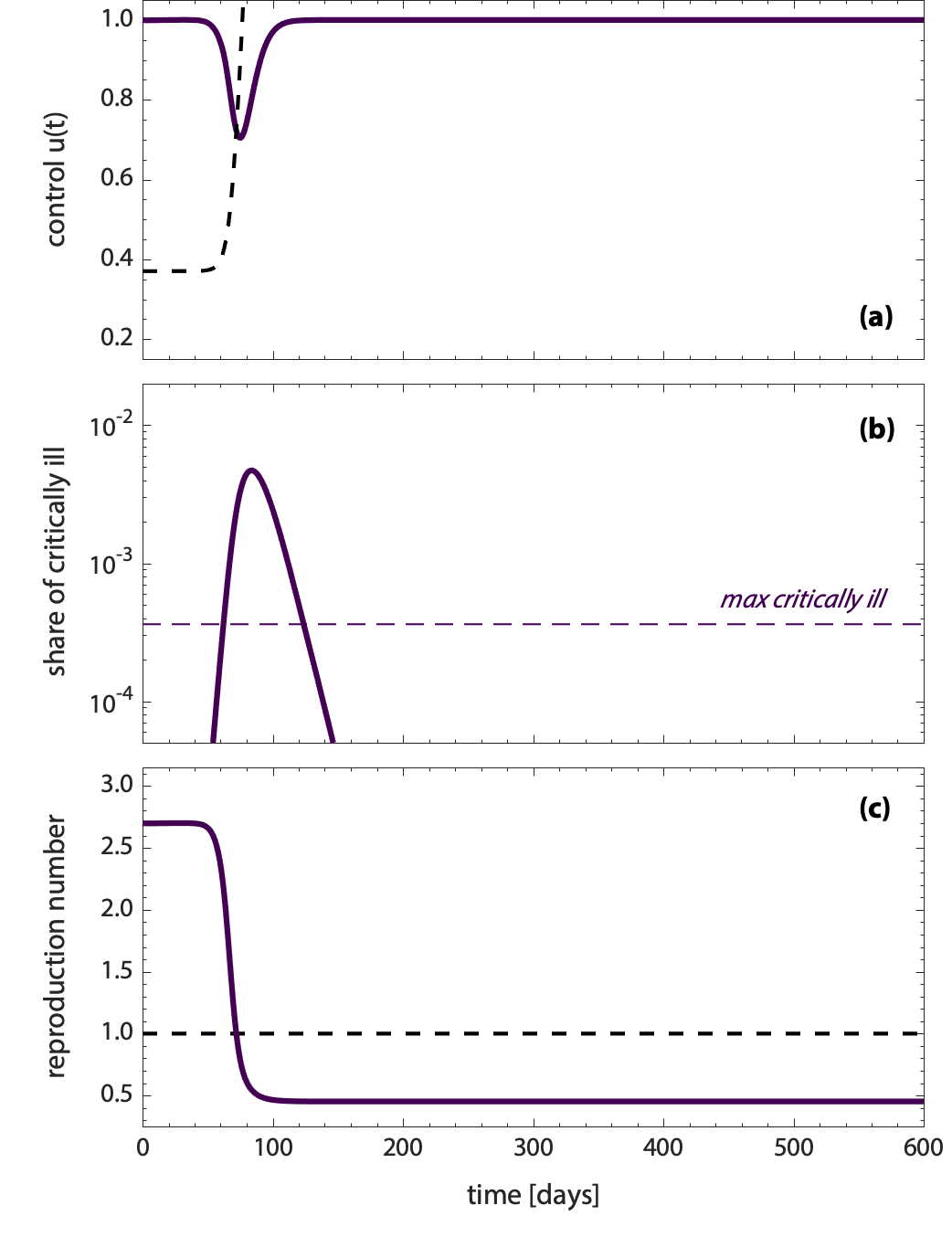WIAS Research on COVID-19 related topics
Mathematical models and the systematic investigation and interpretation of data play a central role in the current public discourse on the COVID-19 pandemic. Many aspects of applied mathematical research and activities of WIAS researchers are relevant for the investigation of these questions:
- Non-pharmaceutical social distancing measures such as home quarantine, school closures, prohibition of mass events and even curfews are
currently intensely discussed strategies to control the spread of the COVID-19 pandemic. On the basis of a simple epidemiological model
and continuous time optimal control theory, Markus Kantner and Thomas Koprucki have computed the optimal, non-pharmaceutical intervention
strategy for transmission reduction for the case where no vaccine becomes available and the complete containment of the virus is not
possible, see Figure.
» M. Kantner, T. Koprucki, Beyond just "flattening the curve": Optimal control of epidemics with purely non-pharmaceutical interventions, J. Math. Industry 10, 23 (2020). DOI: 10.1186/s13362-020-00091-3
- The analysis and prediction of the spread of infections such as the coronavirus are characterized by numerous uncertainties, for example,
regarding spatial clustering or the individual transmission rate of individuals. Since 2018, researchers of the group Interacting Random
Systems around Alexander Hinsen and Benedikt Jahnel are investigating corresponding stochastic epidemic models on random networks. This
research enables, among other things, predictions about the speed of propagation, the form of infected clusters and possible decentralized
countermeasures. The methods were initially developed in the context of malware propagation in ad hoc telecommunication networks and are now
being further developed also for epidemiological applications.
» A. Hinsen, B. Jahnel, E. Cali, J.-P. Wary, Phase transitions for chase-escape models on Poisson-Gilbert graphs, Electron. Commun. Probab., 25:25 (2020), https://projecteuclid.org/euclid.ecp/1585188174 - Dietmar Hömberg was co-organiser of the webinar “Mathematics of the COVID19 crisis - In the eye of the storm” organised by the European Consortium for Mathematics in Industry (ECMI) on 29 April 2020, where scientists from different European countries presented comprehensive studies on the specific challenges in their countries.
- Barbara Wagner is member of the COVID-19 Activity Group of the European Mathematical Society (EMS).

Fig.: Optimal control of non-pharmaceutical measures to minimize the disease-related deaths while simultaneously achieving herd immunity with minimal socio-economic costs. (a) The function u(t) quantifies the mean reduction of infectious contacts. (b) Optimal control limits the maximum number of simultaneously critically ill patients by enforcing a dynamical equilibrium. (c) Reproduction rate in the course of time.

